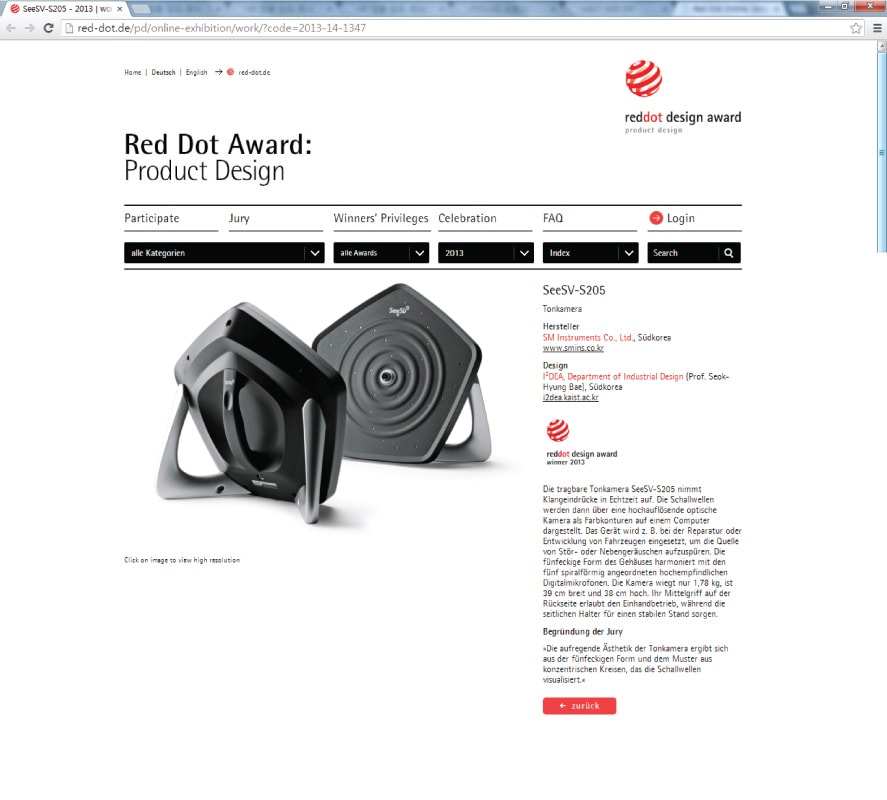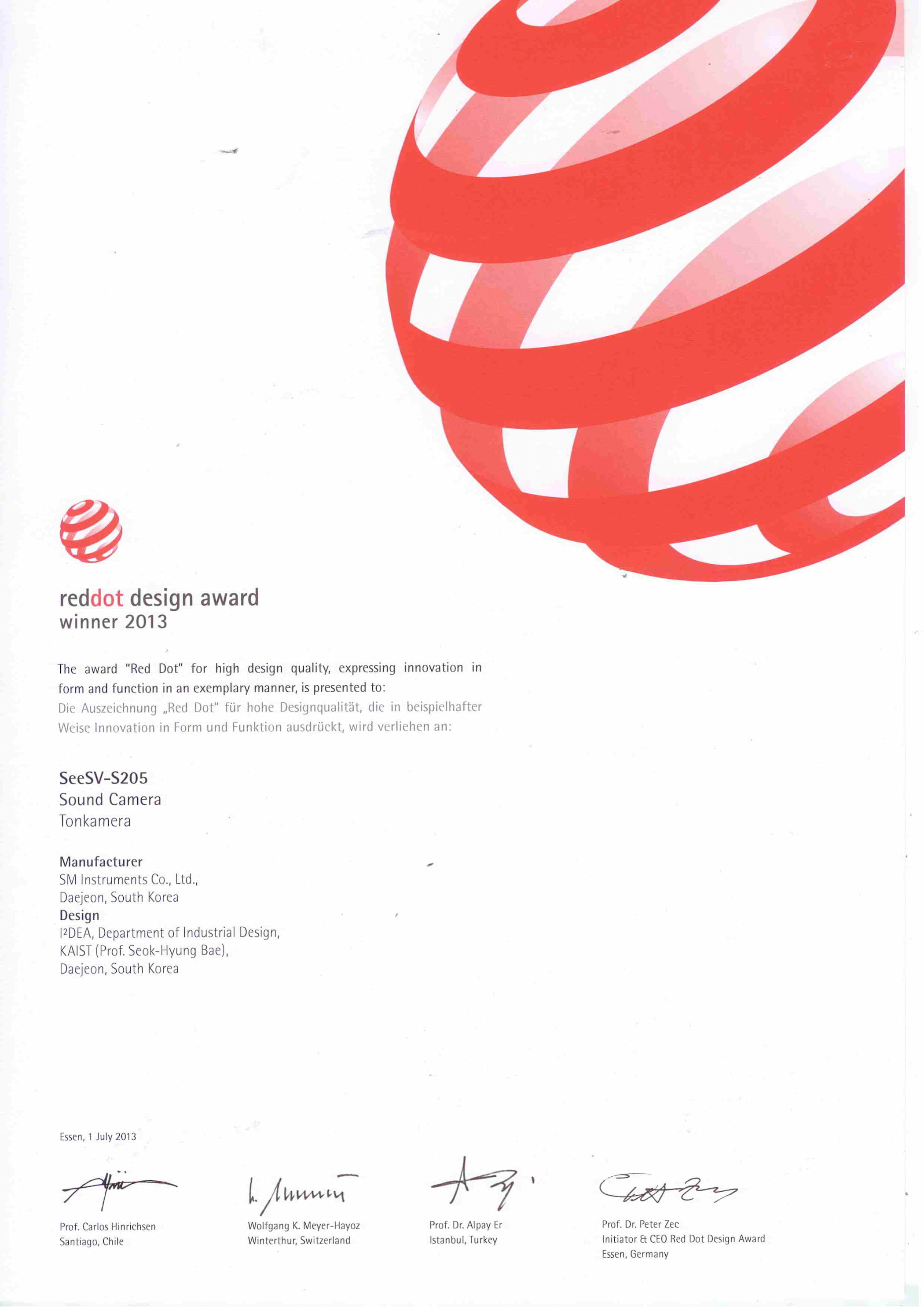🏆 2013 Red Dot Award: Product Design
SeeSV-S205 Sound Camera
Seok-Hyung Bae
David Lee
Sujin Yu
Joon Hyub Lee
KyoungHee Son
Hayan Choi
Professor Seok-Hyung Bae from the Department of Industrial Design at KAIST, together with SM Instruments, Inc., a venture company established by a KAIST graduate, developed ahandheld sound camera, which is the first of its kind in the world, to easily detect noises arising from such sources as heavy machinery, home appliances, vehicles, and vessels. The sound camera, SeeSV-S205, is light enough to hold in one hand, and weighs only 1.78kg with 39 cm width and 38 cm height.
The pentagonal-shaped camera has five spiral arrays of 30 highly sensitive digital microphones to capture sound. In the center, a high-resolution optical camera is installed. The three ergonomically designed grips at the back of the camera provide excellent usability and mobility, allowing users to freely move it around to locate noise sources at various areas including the insides of machines and cars. For its innovative design, last February, SeeSV-S205 won a 2013 Red Dot Award in product design category, one of the three most prestigious international design awards in the world.
A sound camera visualizes sound in color contours, similar to the way a thermal camera displays temperature with visual images. Existing models of sound cameras are bulky and heavy, and require the assembly of multiple components to be installed on a tripod. For users, it is not only inconvenient to carry the camera but also difficult to detect noise at spots that are packed or cramped, for example, underneath cars. Unlike previous models, SeeSV-S205 requires neither assembly nor a tripod for use. KAIST's handheld sound camera utilizes FPGA-based high-speed beamforming technology, detecting transient and stationary noise sources. It is capable of capturing 25 images per second. Highly sensitive microphones can capture various sound immediately and accurately. Its major application is detection of buzz, squeak and rattle (BSR) as well as visualization of noise, vibration and harshness (NVH).
See more from the worldwide coverage:







